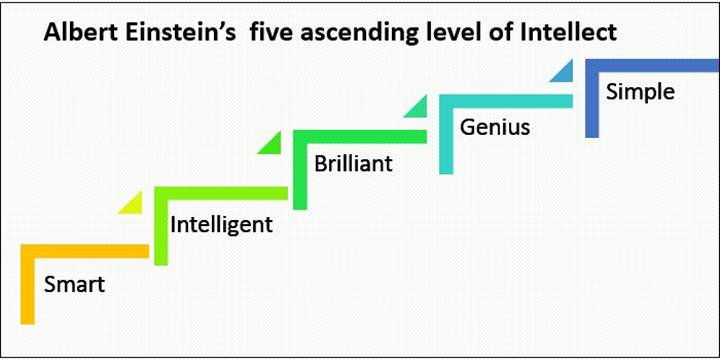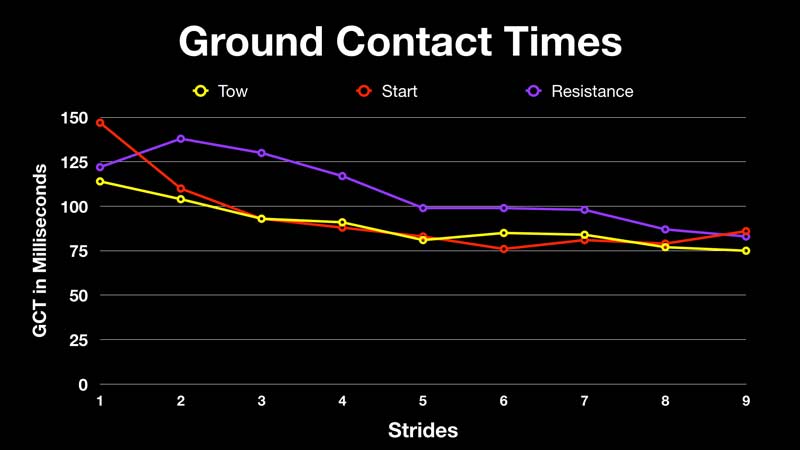Here in part 1, we’re going to go over the need to embrace complexity in our coaching of speed, as well give you a basic overview of how I attack it. Later, in part 2, we’ll get into more specifics of the elements I currently consider vital in the training of speed.
“The definition of genius is taking the complex and making it simple”.
Albert Einstein
There is an inherent need for coaches to make things simple. Athletes don’t thrive on complex. They thrive when they can shut down the prefrontal cortex and go on autopilot, with 1 or 2 thoughts, that are directly related to their performance, having prominence. They thrive on simple.
It is because of this need to make the training process simple that I believe some coaches have OVERLY simplified the training process. The problem is that in order to get to simple, you first have to go through the many rabbit holes of complexity. But when you never take the first steps towards making the simple complex, you can’t understand how to take the complex and make it simple.

For instance, sprinting is simple: apply more force, apply it quicker, and apply it in the proper direction. Easy enough?
With that logic, training becomes pretty simple. We need to use exercises that allow you to apply more force, apply that force quicker, and apply it in the proper direction. Do that and running faster will be a natural byproduct. Right?
Athletes: A Complex System
Wrong. If you’ve worked with even a few athletes you know that progress is never that linear. I wrote an article a while back detailing a failed 60 yard dash experiment (read it here) that, all things considered, should have made me faster. It didn’t.
I also recently made an Instagram post about one of our athletes who got slower on a program I thought would make him faster, before we made some changes which ultimately led to him getting faster.
The point isn’t that I want every coach to make super complex training programs for their athletes. The point is that the coach needs to UNDERSTAND the complexity so that he can truly make a “simple” and effective program for his athletes.
Going Down the Rabbit Hole
We said earlier that getting faster is a result of applying more force, applying it quicker, and applying it in the proper direction. It’s a true statement. Now the question becomes: How?
Squats you say? Okay, but when an elite level sprinter is running at top speed, they are applying up to 5 times their bodyweight in force in less than 100 milliseconds. Squats will get you stronger, sure. But are they going to prepare you for that?

Let’s try star sprint coach Ryan Flaherty’s method. Improve your “force number” and you’ll automatically get faster, right? Assuming you don’t work with the absolute best athletes in the world, who already have the nervous system to apply force at lightning speeds, no. Getting stronger, by itself, won’t magically make you faster (if you read my previous article linked above, you know I’ve tried it).
Or how about we try addressing technique? A skips, B skips, C skips. Perform these perfectly and you’ll be golden, right? Wrong. Listen to top sprint coach Chris Korfist discuss his experience with common technique drills.
And that’s not to mention the philosophy behind what we are trying to coach in terms of actual running technique. It’s common for sprint coaches to emphasize “straight lines” to maximize force transfer. The problem? Our body doesn’t work in straight lines:
These are some of the fastest people in the world, yet we see a rotating pelvis, rotating shoulders, lateral bending, and more “wasteful” movement. If the best in the world are doing it, can we really say it’s wasteful?
I bring up these points to say this: some of the methods mentioned above will work for some athletes.
Athletes have gotten faster by increasing their squat.
Athletes have gotten faster by increasing their force number.
Athletes have gotten faster through the use of A, B, and C skips.
But just because a coach/athlete has used a method and seen improvement from it in the past, doesn’t mean you, or your athletes, will see the same improvement.
My Perspective: How I Currently Train our Athletes
I wanted to emphasize the “currently” portion of the title above because this process is subject to change. In fact, I fully expect it to change as my knowledge and perspective continues to change. Nevertheless, this is how I attack it.
1 – Evaluate: Measure
We are going to look at the athletes current 10 yard acceleration time, flying 10 time, and 60 yard dash time. This helps me understand where their biggest weakness is throughout the course of their 60. IOW: do we need to work on acceleration or top speed?
1 – Evaluate: Technique
I get video of their acceleration and flying 10. This allows me to see how they move and where energy leaks might be occurring. Per the discussion earlier, the energy leaks I’m looking for have nothing to do with running in straight lines.
1 – Evaluate: Power Production
We recently began looking at jump ability: how well do they jump from a static position versus a countermovement jump versus a depth jump. This idea is not new by any means, and is something we should have been implementing sooner. It helps direct where the athletes training needs lie.
2 – Prescribe: Sprints
Based upon the athletes flying and acceleration 10 yard measures, as well as their technique, we’ll put together their sprint program. These training sessions will occur on the same day as their lower body lifting day to allow adequate recovery time between training sessions.
2 – Prescribe: Power Development
Based upon their jumps, as well as where their strength/weakness lies in relation to top speed/acceleration, we’ll put together a plan for them to improve their respective ability to produce pure power in the time frame needed. For top speed, this time frame is narrow, while acceleration allows for a little bit longer duration.
3 – Communicating and Adjusting: Embracing the Complexity
Once we’ve set forth a prescription for the athlete, continuous measurements and adjustments are the name of the game. I’ll generally start with somewhat simple prescriptions and move to more complex if needed.
For example: a lot of times the athlete has never done a flying 10 before training with us. I’ll put him on a simple protocol of 2-4 flying 10’s per week, for 3-4 weeks, to see if simply trying to run faster elicits improvement. Once they stop seeing gains from that, or if they never do, we’ll switch it up. Maybe I’ll put a little bit of weight in their hand (see David Weck). Maybe I’ll have them run with a dowel rod over their head. Maybe I’ll have then run with a dowel rod over their head but drop it halfway through the run. The progressions/regressions that can be had are endless and are only limited by your creativity as a coach.
That’s not to mention what we can do in the weight room. Are they having trouble getting their swing leg through? The hip flexor is probably a good place to start (as well as addressing how their foot is attacking the ground, but that’s a story for another time). They have a past of hamstring issues? Long duration isometrics, nordic curls, and hamstring physioball rolls are a good place to start. Again, the progressions/regressions here are dictated by your knowledge and ability to be creative as a coach.
This is my formula. There are other, much more successful sprint coaches, that have different formulas than I do. There are also less successful sprint coaches that have different formulas than I do. So what actually matters?
Making it Simple Once Again: The Formula That Matters
The formula for determining whether your training is or isn’t working for any one athlete is simple: did or did they not get faster?
All the methods, the technique arguments, the cuing, all of it, becomes irrelevant when we receive our answer to that question. It really can be that simple. But… how you get there is not simple.
The beauty of coaching is that the more complex you can make it, the more avenues you have that allow you to make it simple. You see more of what’s happening. Instead of seeing a time on a stopwatch, you see a collapsing ankle leading to the time on the stopwatch. Instead of seeing poor running form, you see a weakness in the hamstrings that, when addressed, will improve running form. Instead of seeing “proper” straight line running, you see a stiff torso that won’t allow the athlete to use the propulsive forces of a coiling core.
It can go on and on. The only limit comes when you limit your willingness to learn; When you limit your willingness to dive into the simple and make it complex.
My goal with this article isn’t to convince you that any one way of attacking the speed problem is right. Just the opposite. It’s to convince you that any one way of attacking the speed problem can be right, but… it also can be wrong.
By embracing complexity, by going down the rabbit hole, by struggling to understand that which we don’t yet understand, we can learn. And through that process of questioning, struggling, and learning, we will get closer to what Einstein determined as “simple”. And by strategically taking complex ideas and making them simple, we can provide progressively better training programs for our athletes, giving them the service they deserve.
That’s it for today. Questions or comments? Send an email to brady@dacbaseball.com.
Hope y’all enjoyed, and as always,
Stay Hungry.
-Brady
